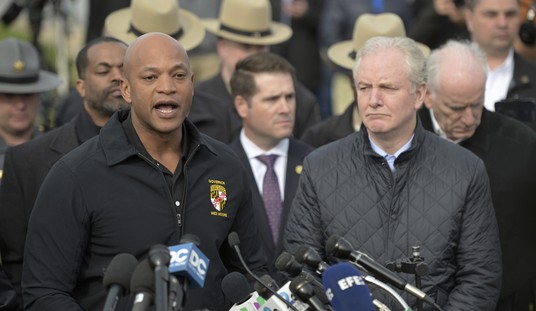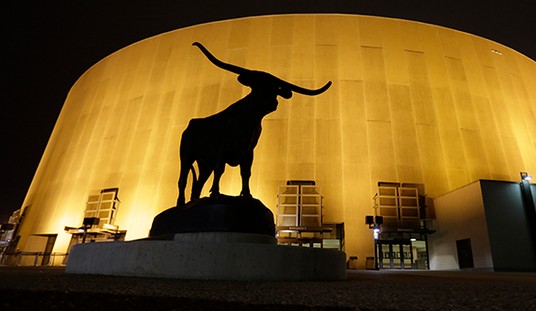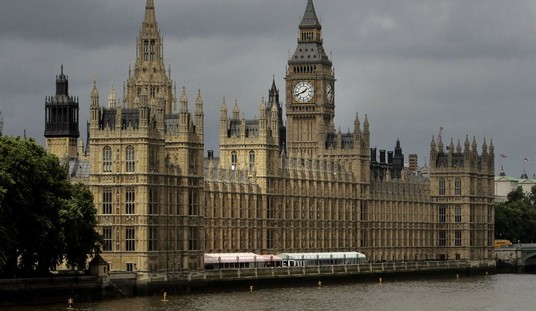Get ready for a photo finish in Wisconsin. Incumbent Ron Johnson had trailed by significant margins in his attempt to defeat Russ Feingold in a rematch of their 2010 Senate race, at times by double digits. Suddenly, though, the race has reverted to an inside-the-margin nailbiter, according to the gold standard of Wisconsin polling:
The U.S. Senate race in Wisconsin has tightened to its narrowest margin to date in the Marquette Law School Poll.
Former Democratic Sen. Russ Feingold leads incumbent Republican Sen. Ron Johnson 46-44 among likely voters. Libertarian candidate Phil Anderson received 4 percent support.
It’s a four-point drop in the gap for Feingold since the last Marquette poll in late September. That’s notable in itself, as Trump has had a bad three weeks since that time. Trump now trails Hillary Clinton by seven points in the Marquette survey, but it hasn’t hurt Johnson at all. In fact, his favorables have gone up from 39/35 to 43/37 — and Feingold’s have dropped from 48/32 to 45/40.
This is the second poll in a week showing the race within the margin of error. A CBS/YouGov poll showed Johnson only trailing by three points, while a Loras poll from last week had Johnson up by five. The RCP average has now dropped to a three-point advantage for Feingold, down from a nearly ten-point advantage at the beginning of the month.
What’s happened? Voters have come home, mostly:
Marquette poll director Charles Franklin said as the race has gotten closer to Election Day partisans on both sides have closed ranks behind their respective candidates. Only 7 percent of Republicans and 5 percent of Democrats said they would cross over and vote for the other party’s candidate.
That’s part of the answer, but not all of it. Eliana Johnson writes that Clinton’s rise may be helping Johnson:
Conventional wisdom gelled early that Johnson was a dead man and, as a result, neither the National Republican Senatorial Committee nor its Democratic counterpart has invested much in the race.
Then something funny happened. A handful of recent polls show Johnson mounting a breathtaking last-minute comeback: The latest Marquette University Law School poll puts him just two points behind Feingold, within the poll’s margin of error, and campaign sources say this tracks with their internal numbers, which are calculated using the Wisconsin Republican party’s data machine, which helped Scott Walker fend off a recall and then got him reelected. “On the ground,” says the Wisconsin-based Republican strategist Mark Graul, the race “has felt and looked very close to me for the last couple of weeks.” While some outside groups, including the Koch Brothers’ Freedom Partners, had cut their losses and pulled out of the state, others are now marching in. The free-market Club for Growth is up with a $750,000 ad buy slamming Feingold in the closing weeks of the election. …
An aggressive, positive ad campaign, he says, has helped to “put some meat on the bones of who Ron Johnson is as a person,” and Johnson’s numbers are now right-side-up, 34-32, though by a smaller margin than Feingold. And he remains the lesser-known candidate.
The decisive factor in the race might be that, while swing voters in the state may favor Clinton over Trump, they also appear to want a congressional check on a Clinton presidency. That would help to explain why, while one would expect Republican Senate candidates to be going down with the Trump Titanic, the fates of many are actually improving. “Clinton is surging, but down-ballot Democrats are losing ground,” the website FiveThirtyEight reported on Thursday.
Indeed, Harry Enten noted yesterday:
Clinton’s pre-Democratic-convention swoon was matched by Democrats doing worse in the polls. But Democrats rebounded as Clinton did after the convention. Then their odds all fell together in the second half of August and through September. Clinton’s chances began to rise again after the first debate, but unlike after the convention, Democrats’ chances of taking back the Senate haven’t followed Clinton’s presidential odds upward. To put this in mathematical terms, the correlation between the Democratic chances in the Senate and Clinton’s chances was a very high +0.87 in the 74 days before the first debate.2 In the 16 days since, it’s been -.23, indicating that they’re moving in opposite directions.
This negative relationship between Clinton and Democratic Senate candidates seems to hold true across the board. We can see this by looking at the FiveThirtyEight polls-only forecast on the date of the debate and on Oct. 12 for both the Senate and the presidency in the 26 states where at least one poll was conducted before the first debate.
If that’s true, though, would a Trump comeback endanger Johnson? We may or may not find out, but Johnson seems to have found a winning combination in Wisconsin regardless. Republicans might want to jump back into the race in order to make sure Johnson crosses the finish line first, photo-finish prospects being what they now are.








Join the conversation as a VIP Member